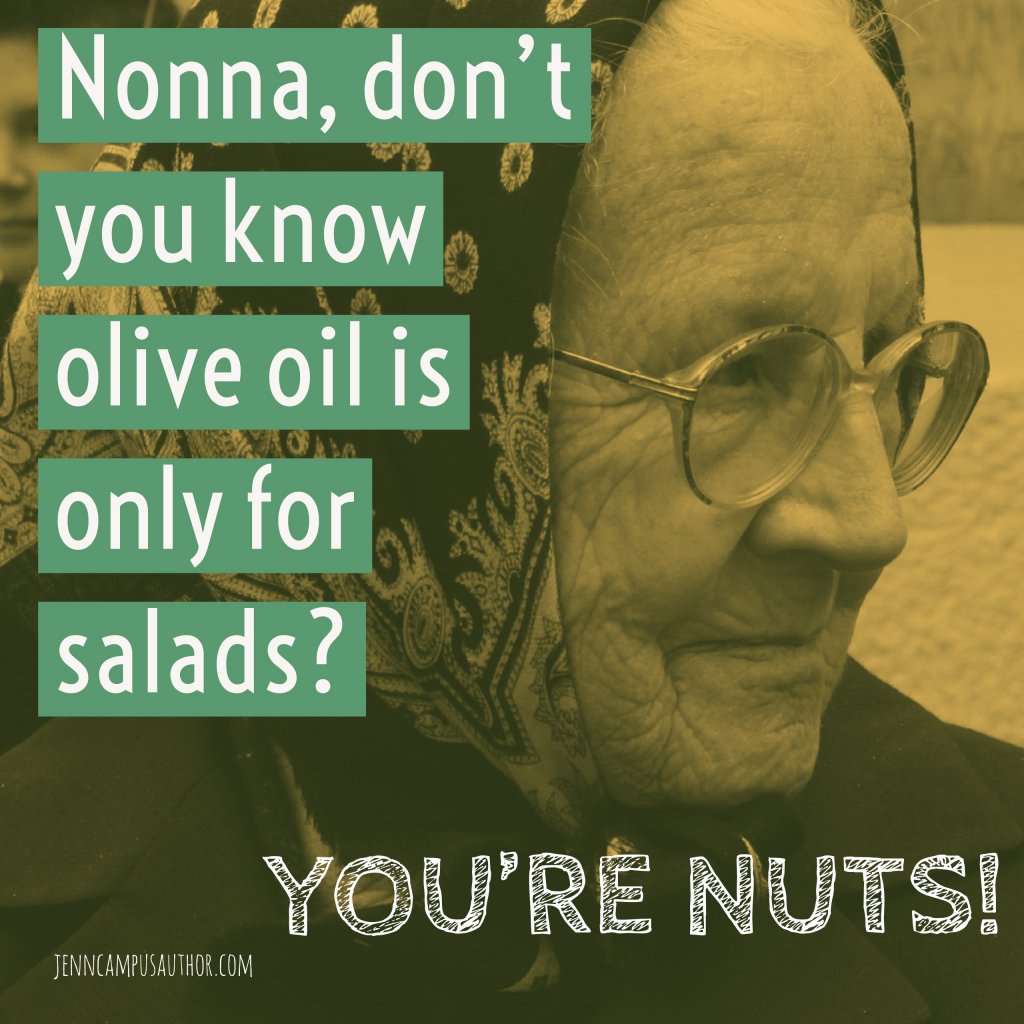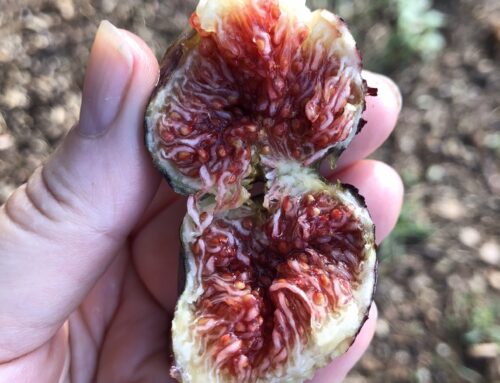Studies show that The Mediterranean Diet is one of the healthiest in the world. Despite a diet laden (and I really do mean laden) with carbs, Italians can expect to live into their eighties. On average they have better heart and mental health as compared to Americans, Canadians, and Brits. Bloomberg named Italy The World’s Healthiest Country in 2017. So why are Americans so afraid of carbs?
Several studies have linked the Mediterranean Diet with many health benefits such as reduced aging, a healthier brain, weight loss, and a lowered cancer risk.
WHAT THE MEDITERRANEAN DIET IS, AND WHAT IT IS NOT
The Mediterranean Diet is inspired by the eating habits of Greece, Southern Italy, and Spain in the 1940s and 1950s. It is not based on what people in the Mediterranean eat today. It is not based on all the regional diets of Italy which are really varied, only that of Southern Italy. It is important to note these specifics because Italy is undoubtedly one of the healthiest countries in the world today. But they don’t eat the way they did in the ’40s and ’50s. Plus, foods in each region of the country vary tremendously.
The Mediterranean Diet touts these eating habits:
Everyday intake of:
- Extra virgin olive oil (as the principal source of fat)
- Vegetables
- Fresh fruits (consumed mostly as desserts or snacks)
- Whole Grains (including pasta, corn, and rice)
- Nuts and legumes
Moderate intake of:
- Seafood
- Poultry
- Dairy products (principally cheese and yogurt)
- Red wine
Low intake of:
- Eggs
- Red meat
- Processed Meats
- Sweets
The Mediterranean Diet Pyramid (in the same style as the American food pyramid) constructed by the Mediterranean diet advocacy group, Oldways in 1993 shows a foundation of activity and social connections. This research illustrates the overall importance of lifestyle ahead of diet. I will address a little further along.
MEDITERRANEAN DIET PARADOXES
Looking at this list of foods, it seems to me that it is pretty similar to how many regions in Italy eat, yet there are some definite gray areas.
Fresh Fruit and Vegetables
Fresh fruits and vegetables are inexpensive in Italy and available all year round. We literally fill our fridge with them. It costs about $30 a week for 3 adults and 2 kids. Produce availability rotates according to the season and we eat a variety every day, like salads, in plates of pasta and risotto, cooked as side dishes, in soups, and eaten for a sweet end to a meal or for snacks.
BUT….
Pasta
Pasta is eaten every day. Period. And it isn’t usually “whole grain”. It is the white stuff. As for portion sizes, this made me laugh:
“Fact: Typically, Mediterraneans don’t eat a huge plate of pasta the way Americans do. Instead, pasta is usually a side dish with about a 1/2-cup to 1-cup serving size. The rest of their plate consists of salads, vegetables, fish or a small portion of organic, grass-fed meat, and perhaps one slice of bread.”
I am not sure what planet they are living on, and I doubt they’ve ever eaten in a real Italian home. Italians eat way more pasta than that. Pasta is assuredly not a side dish. It’s usually the first course for most meals, often followed by meat, vegetables, and salad. In ACTUAL “fact” my husband, father-in-law, and 2 kids (4 years old and almost 2) can put away a whole box of pasta between them in one sitting. That is about 3-4 cups of cooked pasta for the adults. If that doesn’t convince you, remind me to tell you the story about the 9-course seafood pasta dinner we had in Sicily. Carbs are the foundation of the diet.
Research backs up the healthfulness of eating pasta. An Italian study (of course!) of over 23,000 people in Italy found that higher pasta intake was not associated with a raised body mass index (BMI). BMI is widely used as a measurement of a person’s body fat, based on a person’s height and weight, and waist-to-hip ratio.
Lean Meats, Sparingly
The Mediterranean diet espouses eating lean meats and seafood a few times a week, while only consuming red meat once a month. I find that one hard to believe, especially since most rural peoples; especially farmers have access to red meat like beef, lamb, and goat and people eat what is readily available. I see meat is eaten daily in Italy, just not in the amounts that people eat in other areas of the world. For most cooks in Italy, those items are used as condiments, not the main dish. For example using ground meat or sausage in a sauce to top pasta, as a component to a soup, or seafood in risotto.
Dairy in Moderation
As for dairy, most people I know, especially here in Sardinia, the sheep cheese capital of the world, do eat a good amount of dairy daily. There is nothing moderate about it…and yet a “paradox” is that Sardinians are the longest-lived people in the world, and the consumption of pecorino cheese is cited as being one of the key factors to that longevity.
Cured Meats
And finally, what would Italian food be without salumi, or cured meats like prosciutto, guanciale, pancetta, bresaola, salami, mortadella, or soppressata? Just to name a few of the most popular varieties. The salumeria or salumi store originated in Italy and dates back to the middle ages. There is a long history and place for these foods in the traditional cuisine of Italy. So, of course, that means cured and processed meats were just as popular in the 1940s and ’50s as they are today. The salmueria is just as ubiquitous in the Italian village as the local butcher and fruit and vegetable vendor.
OLIVE OIL ISN’T JUST FOR SALADS
After the “pasta is bad for you” belief, the next most pervasive, almost dogmatic belief is that olive oil is only for salads or my favorite expression, “light cooking”. I swear if I see this written one more time, I will scream.
In Italy, as well as other parts of the Mediterranean people cook with, bake with, and fry their foods in olive oil. It is part of the traditional diets of this region. Italians use olive oil in copious amounts, literally in almost every dish, from salads to cakes, to pasta, to frittelle (that means fried goodness). In fact, many who tout the Mediterranean diet believe that olive oil may be the main health-promoting ingredient of the Mediterranean diet. The phenols found in olive oil are powerful antioxidants. They have anti-inflammatory and anti-thrombotic properties. Some monounsaturated fatty acids found in olive oil are protective against cardiovascular disease.
This high intake of fats in relation to low instances of heart disease in Italy makes the Mediterranean diet a so-called “Paradox diet”. However, my theory is that it was the producers of other, less healthy oils, such as sunflower, safflower, corn, and peanut who maligned the name of olive oil in the market. Sadly that thinking has crossed over to many with a voice in the traditional foods community. As an anthropologist, it really irks me when others tell people how to use their own traditional foods as if they didn’t already know. Archaeological evidence shows that olives were turned into olive oil by 6000 BC, so this really is a traditional food.
I’d really love to see all these naysayers go to bat with an Italian Nonna.
HISTORY OF THE MEDITERRANEAN DIET
So now we know that the Mediterranean Diet is inspired by the eating habits of Greece, Southern Italy, and Spain in the 1940s and 1950s. The historical influences of those cuisines come from the merging of four distinct cultures: Ancient Roman/Greek, Germanic, Arabic, and the New World.
Italians have been historically passionate about bringing their foodways to other cultures. In 1614 Giacomo Castelvetro, an exile from Modena, Italy, published a book in England on Italian fruit, herbs, and vegetables.
The key elements of the Mediterranean diet, which is the triad of olive oil, bread, and wine, were exported to continental Europe by the monastic orders, which migrated there to evangelize those peoples. Bread, oil, and wine are still, in fact, the central elements of the Christian liturgy, but they were later adopted by the common people of Europe as dietary staples.
WHAT ABOUT THE GLUTEN?
I have a gluten intolerance which means I have to stay away from wheat (and other grains) for the most part. However, I have never ascribed to the theory that grains are bad in general the way many gluten intolerant people have. I’ve mostly just been sad that I can’t eat very many of them.

I have been asked often since moving to Sardinia how I am handling being gluten-free in a gluten–glutton country.
The answer is, very well, actually.
See, Italians eat food that tastes good; in fact, it is their God(s)-given right. There are Italians who cannot eat gluten. As I mentioned in the first post in this series, Italians who can’t eat gluten are not shamed like gluten-free Americans often are in the states, they are pitied. In fact, it is treated as a serious health condition. Here, no one cares if you have Celiac or are “just intolerant”, they are both treated the same, with respect and care. Indeed, you can purchase gluten-free foods at the pharmacies here. Italians feel bad for you if you can’t eat gluten, and they do their best to help you in your sorrow by making very delicious gluten-free pasta and bread, and often pizza too. The national health care also gives stipends to people who have to eat gluten-free due to the extra expense. For no one should live devoid of these foods. It isn’t right. It isn’t La Dolce Vita. This illustrates the importance of traditionally gluten foods in the diet, and how those who cannot have gluten now eat their gluten-free counterparts. Which are still full of carbs.
Some people, who can’t eat gluten in the states, can eat it here. I am not sure why, but I would wager that it has less to do with the gluten and more to do with GMOs and Roundup (both banned in Italy, and most of Europe), but that is a whole other can of worms.
Can I eat gluten here? Sometimes, but only in moderation.

IN CONCLUSION
I find this topic endlessly interesting because so many books have been written about the Mediterranean Diet and the Blue Zones. Although they try to make sense of the link between diet and lifestyle and longevity and health, there remain gray areas that are swept under the rug. There are more “paradoxes” that never see the light of day, as they would not support their arguments. I will talk about this more in the next post on this topic.
Suffice to say the “carbs are bad”, “olive oil should only be used as a dressing” and the reality of what the Bloomberg article shows with Italy as the healthiest country today don’t quite add up.
The real takeaway for me when I research this topic is that eating your ancestral diet is what your body wants. I am not talking about our Paleolithic ancestors, but those just a few generations ago. Also, a point of contact between people and territory is a big part of it. The peoples of the Mediterranean have always seen how their land and their lives are intertwined. There is a deep respect for food and enjoyment of it because they are both born from the soil where most of the products of their diets come from. This means there is very little stress in their minds when it comes time to eat. It is well known that stress is the biggest factor in poor health. Take that stress out of the equation, and I think we have over half of the mystery solved.
The third part of the series Live Like a Sardinian: The Key to Longevity connects the dots between food, land, and tradition, and discusses and answers your questions about the Blue Zones and The Mediterranean Diet.
If you want to read about how living in Sardinia helped me deal with some of my stressful and unhealthy food issues check out the first post in the Eat Like An Italian series. Eat Like An Italian: Part 1: No Guilt (How Sardinia Helped Me Deal With My Unhealthy Relationship With Food).
https://www.tryinteract.com/share/quiz/608ab694c671af0017ce0482
Related Posts:
Live Like a Sardinian: The Key to Longevity
Traditional Sardinian Food: Malloreddus and Maialetto
Medieval Chickpea Flour Pan Cakes
Make Soup Like An Italian









thank you for sharing this. I’ve eaten mediterranean for most of my life. My grandparents came from Italy. I love the old recipes, they were passed down by showing – my grandparents from their parents, to my parents, to me. Pasta wasn’t every meal for our family, though when it was, it was the meal, along with salad and bread, and maybe veggies. Wine, bread, and salad were every meal. I’ve tried lots of food trends, and this way of eating is my comfort and go to. My friend is Czech, and his favs are very different, heavy meats and sauces, dumplings and such, his family recipes passed down through generations. Hard for me to digest that type of food – german, irish, etc. I’m off to read your writing on living in Sardinia. Sounds wonderful.
Joy!
Ramona
Hi Ramona!
Thanks so much for your comment. I grew up eating a lot of different kinds of foods, living in an international place like the Washington, DC area. But I really enjoy the simplicity of traditional foods. And cooking the Italian way is so fresh and delicious. I love it.